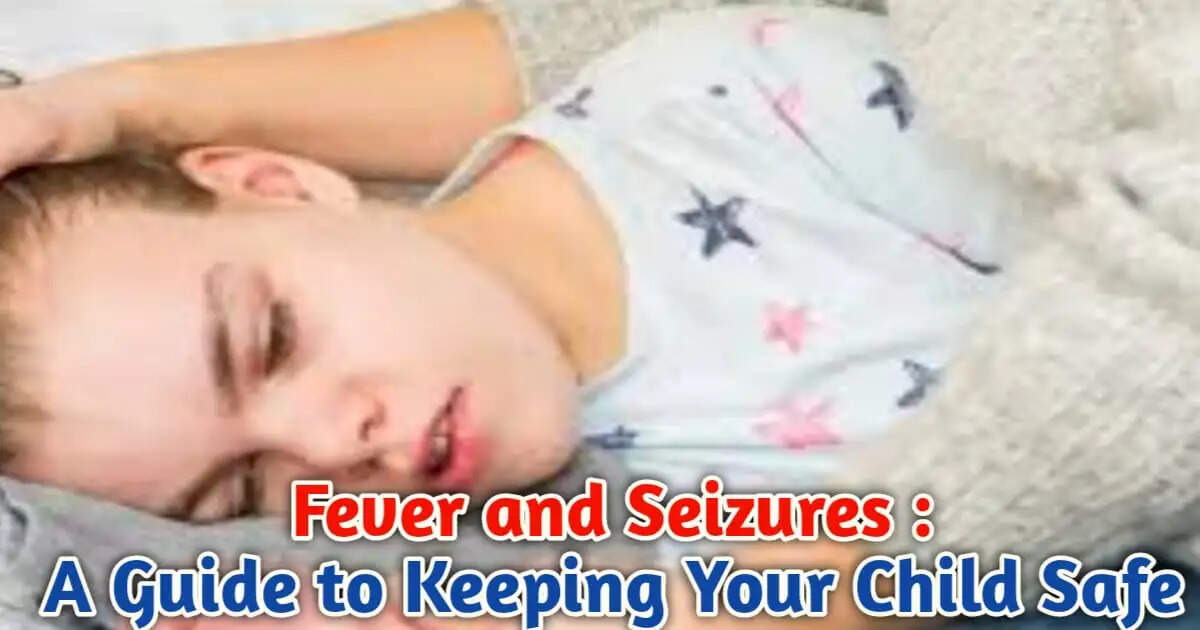Children may have an epileptic seizure if they have a fever of 103°F. Learn from a neurologist how to protect children from epileptic seizures

Febrile Seizure: Fever is a common occurrence in children, but sometimes this fever can be dangerous, especially when it reaches 102° F or 103°F or more. If we go by the guidelines, a febrile seizure is defined as a temperature of 102°F or more.
Due to high fever, some children may have tremors or epileptic seizures, which are called febrile seizures in medical language. This condition can be quite scary for parents, but it can be avoided with the right information and care. Epilepsy Awareness Day is observed every year on March 26.
What is a febrile seizure?
Febrile seizures or seizures caused by fever are usually seen in children aged 6 months to 5 years. It is a type of temporary brain imbalance caused by a sudden increase in body temperature. The seizure can last from a few seconds to a few minutes and causes the child to have uncontrollable tremors. In most cases, these seizures are harmless and do not have any lasting effects on the child's brain. However, parents need to know why these seizures occur and what can be done to prevent them.
Why does fever cause epileptic seizures in children?
The main cause of febrile seizures is a rapidly rising fever. When the child's body fights an infection, his temperature can suddenly rise very high. This high temperature affects the electrical activity of the brain and causes tremors. Some of its common causes are as follows:
Viral infection: Flu, cold, cough, or other viruses can cause high fever in children.
Bacterial infection: Illnesses such as ear infection, throat infection, or pneumonia can also cause high fever.
Vaccinations: Some children may develop a mild fever after vaccination (such as the MMR vaccine), which may increase the risk of febrile seizures.
Genetic causes: If someone in the family has had febrile seizures in childhood, the child may also be at risk.
Symptoms of febrile seizures –
Parents need to identify whether the child is having an epileptic seizure or not. These seizures usually occur in children between 6 months and 6 years of age, and some of the main symptoms are fever, muscle tremors, loss of consciousness and eyes rolling upward, body stiffness, foaming at the mouth, difficulty breathing, and feeling weak after the seizure. Most febrile seizures last for 1-2 minutes, but in some cases, it can last up to 10-15 minutes.
Is it a sign of epilepsy?
A small percentage of children who have febrile seizures are likely to develop epilepsy later on. For this reason, as soon as children with febrile seizures start to have a fever, in some cases, a small amount of anti-seizure medicine is given so that if there is ever a fever, the fever can be immediately reduced by giving paracetamol. If the fever still does not subside, then at least anti-seizure medicine should be given so that it does not turn into a seizure. However, if the child is having frequent or extremely long seizures, it is important to consult a doctor.
How we protect children from epileptic seizures?
Epilepsy in children can be a serious condition, but it can be prevented by taking proper care and precautions. If your child is suffering from epilepsy or is at risk of seizures due to fever, then this condition can be avoided by taking some measures.
Control fever: Fever is a major cause of epileptic seizures. Therefore, if the child has a fever, it is very important to prevent it from increasing. Medicines like paracetamol or ibuprofen can be given on the advice of a doctor. Also, dress the child in light clothes and wipe the body with a cold, wet cloth so that the body temperature can be reduced quickly.
Give medicines regularly: If the child has had epileptic seizures before, give anti-epileptic drugs (AEDs) regularly as prescribed by the doctor. Not taking the medicines on time can increase the risk of seizures. It is important to consult a doctor before stopping or changing any medicine.
Adequate sleep is important: Lack of sleep can also trigger epileptic seizures. Therefore, make sure that the child is getting enough sleep daily. Young children also need to rest during the day, so organize their routine so that they feel relaxed and calm.
Give a balanced diet: Give the child a nutrient-rich diet that includes healthy fats, proteins, and vitamins. In some cases, a ketogenic diet (a diet with low carbohydrates and high fat) can help control epilepsy. However, it is important to consult a doctor before adopting it.
Keep the child hydrated: Dehydration can affect brain functioning and lead to seizures. Therefore, give the child enough water, coconut water, and fresh fruit juices throughout the day to keep his body hydrated.
Protect the child from excessive light and loud noise: In some children, epilepsy can be triggered by bright lights (flashing lights) or loud noises. If your child has this type of sensitivity, keep him away from an environment with excessive light and loud noise.
Reduce mental stress: Do not put excessive pressure on the child for studies or other activities. Stress and anxiety can also reduce the risk of seizures.
